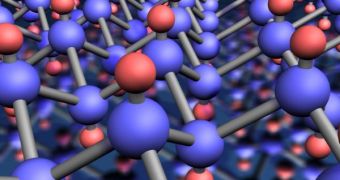Scientists at the University of Manchester, who first discovered graphene, were also behind the creation of the new material, which differs from its predecessor through the fact that it also incorporates hydrogen atoms, which it attracts towards its ultra-thin structure. Basically, one could say that graphane, the new material, and graphene only have two sides, because their depth is only one atom, which by all accounts means it's invisible. Professor Andre Geim and Dr. Kostya Novoselov, the experts behind the 2004 research that yielded graphene, published the discoveries related to the new material on Friday, January 30th, in the prestigious journal Science.
The experts announced that the new material was obtained by making graphene react with various other substances, and added that the ones containing hydrogen were just one of many possibilities. Already, the material discovered in 2004 opened up new avenues for physics and material sciences, through the fact that it behaved like a never-before-encountered semiconductor. Its potential for transporting electrical current is impressive, which makes graphene one of the revolutionary materials to be employed in the construction of many types of innovative electronics.
On the other hand, the new material, graphane, exhibits insulating properties, which means that it could be used as an isolation around the circuits made from its predecessor. “Our work proves that this is a viable route and hopefully will open the floodgates for other graphene-based chemical derivatives. This should widen the possible applications dramatically,” Dr. Novoselov said about the new material.
“The modern semiconductor industry makes use of the whole period table: from insulators to semiconductors to metals. But what if a single material is modified so that it covers the entire spectrum needed for electronic applications? Imagine a graphene wafer with all interconnects made from highly conductive, pristine graphene whereas other parts are modified chemically to become semiconductors and work as transistors,” adds professor Geim, who is also a scientist at the University’s School of Physics and Astronomy.
The team plans to develop other crystalline compounds of graphene by using roughly the same technique used to create graphane, namely bombarding the 2004 compound with atoms of various substances. This might make them become insulators or semiconductors, or any other type of material the researchers could think of.

 14 DAY TRIAL //
14 DAY TRIAL //